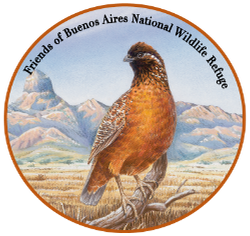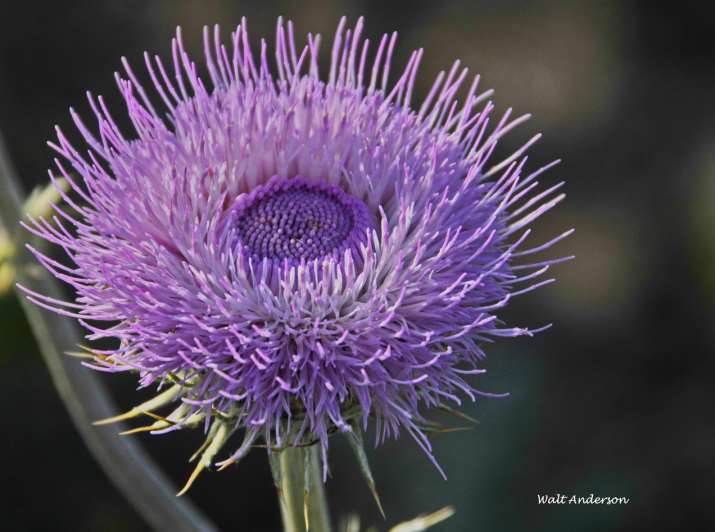
Thistles
by Walt Anderson
We humans tend to generalize, so because of a few really bad actors, we often think of “thistles” as noxious weeds. Some are. I dislike dense invasive stands of Canada Thistle (a European import, not from Canada at all!) or Italian Thistle with disdain. Trying to walk through a dense stand of these imports is sheer prickly torture.
But I appreciate many of our native thistles, which I regard as gorgeous wildflowers that serve an amazing variety of insect pollinators and seed-eating birds. Even the noxious ones have similar wildlife values at times. But they do raise questions about the kinds of landscapes we wish to see in the future.
When a monsoon storm has rolled through the day before, providing humidity that collects in glistening droplets on plants the next morning, I can walk into a field of gorgeous blooming thistles and smile happily, content that despite all the problems in the world, at this moment, here and now, “thistle dew.”

With 4 th of July fireworks a recent highlight, it strikes me that some of the heavenly bursts of color are similar to the dynamic displays of a head of a purple thistle. Find a thistle, and you’ve gotten a head. Otherwise known as a “composite,” it is actually an inflorescence, a collection of hundreds of tiny disk flowers supported by basal spiny bracts that are collectively called an involucre. The sunflower, also a composite, has these tiny disk flowers in its center, but it also has straplike ray flowers arrayed around the edges. Each of these many projections is actually the corolla tube (fused petals) of a single flower. Notice the intricate pattern of the center of the head, where the flowers have not yet opened. Yup, just like the arrangement of a sunflower, these flowers are organized as a Fibonacci spiral, a pattern widespread in nature.
●●●
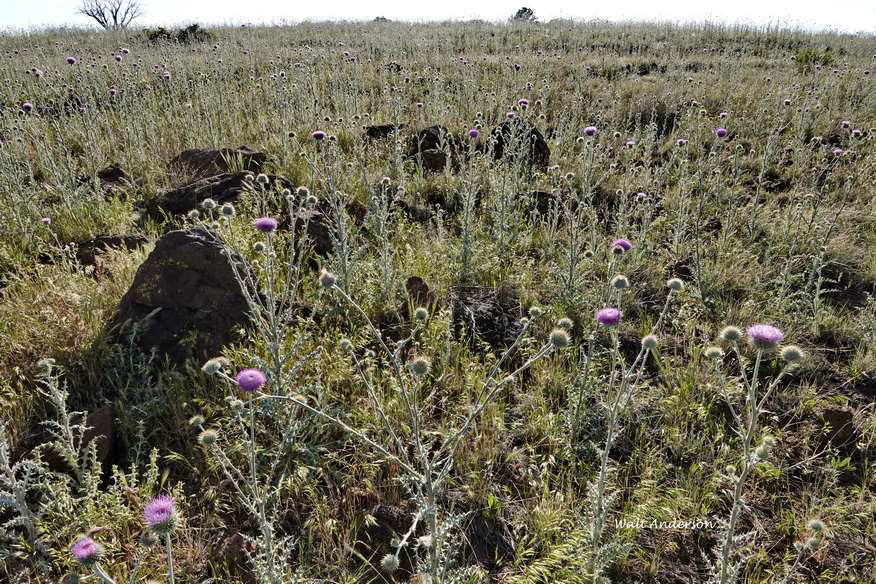
New Mexico Thistles are native to the Southwest, but they can dominate a landscape like this if there is a history of severe overgrazing. Thistles, especially in arid environments, are well-armed; these bold plants have a lot of spine! Spines deter grazing, so once livestock have devoured all the less-protected “ice-cream plants,” the thistles can proliferate. In fact, most of the plants we consider weeds (really just flowers that are out of place by some standard we have chosen) are weedy precisely because we have created disturbances that favor them. Think grazing or bulldozing. Funny that we, through our own actions, should favor their success and then hate them for it!
●●●

A head is really a giant, colorful target for the insects that pollinate it. An individual thistle may have flower heads in various stages of development; this increases chances that many flowers will receive pollen and that a good crop of seeds can form, all important to the plant’s reproductive success.
●●●
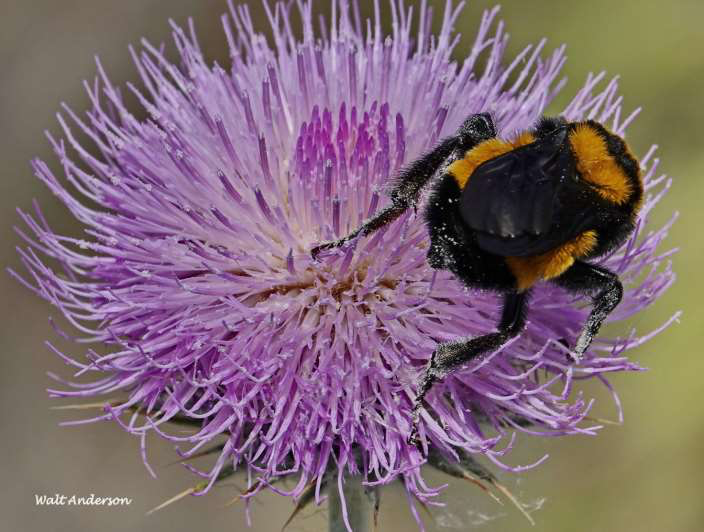
Stamens projecting from the tight floral tubes dust visitors, like this Sonoran Bumblebee, with pollen. The bees are rewarded with sweet nectar for energy and pollen for protein,; the queens especially need pollen to produce viable eggs. Of course, some pollen is transferred to the stigmas of flowers on other thistle heads, fertilization follows, and seeds are produced that carry genetic instructions to the next generation of thistles.
●●●
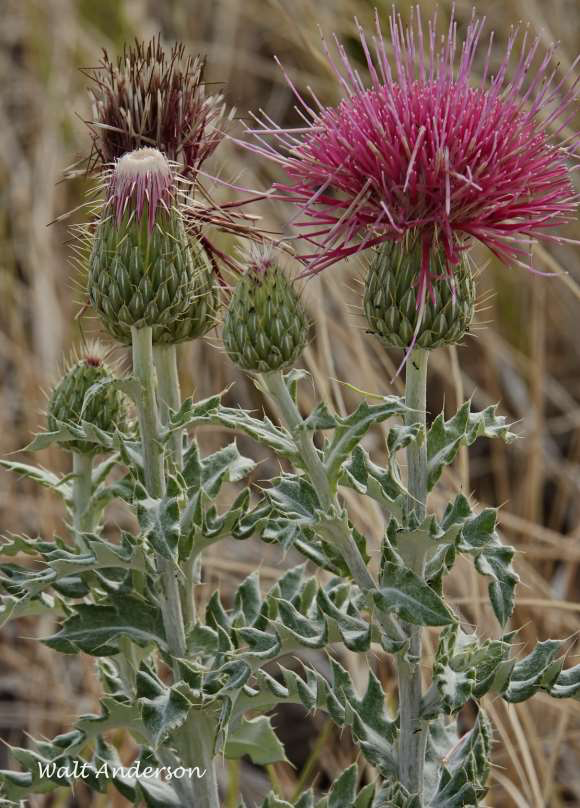
One thistle I really appreciate is the Yellowspine or Santa Fe Thistle. I love the patterns on the involucral bracts and the long floral tubes of the disk flowers.
●●●
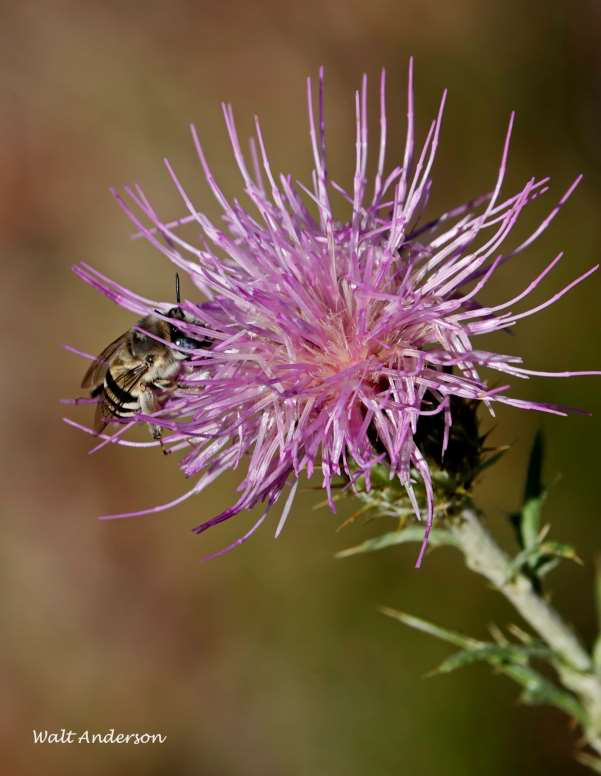
Sometimes a single head is crowded with insects of many shapes and sizes, as well as opportunistic crab spiders, who find this platform to host an irresistible buffet of high-protein goodies. This is a very lovely native bee, and the bee-thistle relationship is a mutualism—but not a symbiosis, as they don’t co-habit.
●●●
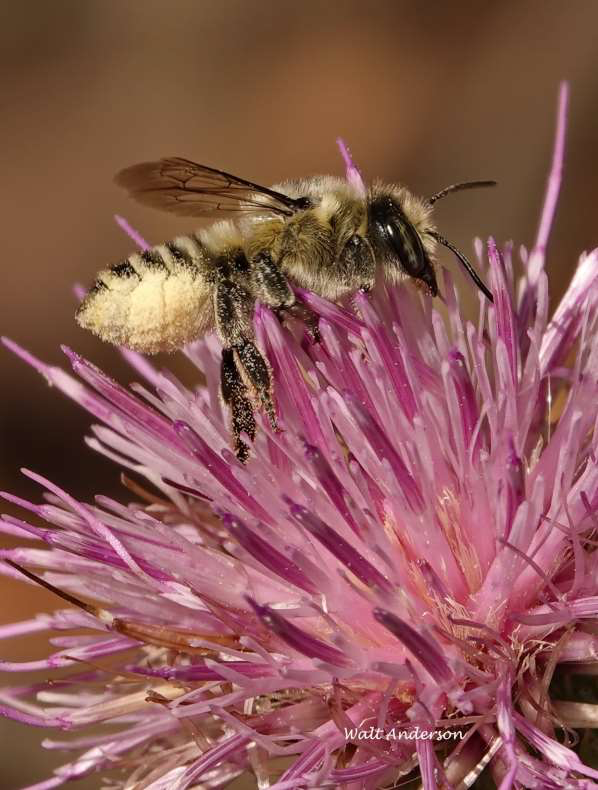
It’s hard to beat a thistle head for insect-watching. More kinds of bees can show up than I can readily identify; in fact, the diversity of native bees in Arizona is among the richest in the world. Arizona is noted for its 5 C’s, but it perhaps should be as well known for its hundreds of bees.
●●●
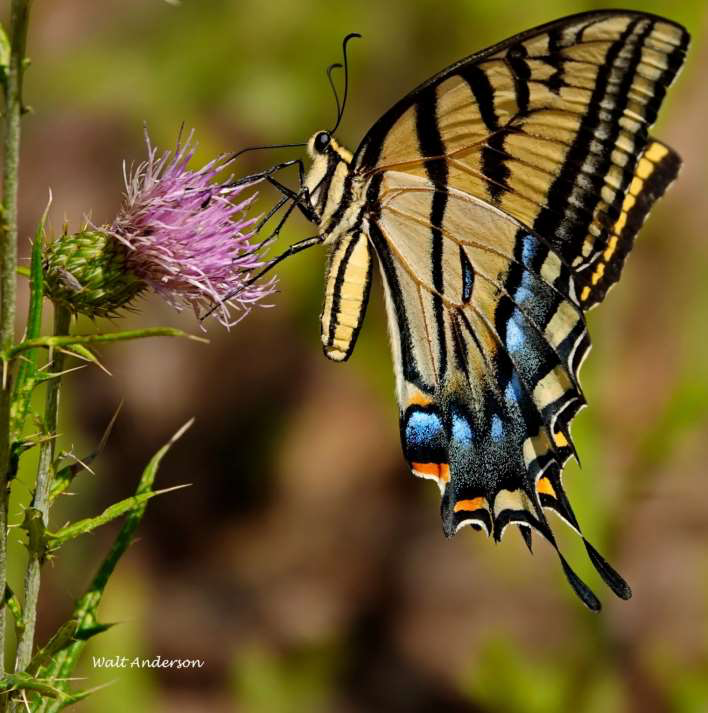
Though many insect visitors are tiny, easily escaping our detection, some are relatively enormous and impossible to miss. The Two-tailed Swallowtail is our state butterfly, and thistles help keep their populations healthy.
●●●
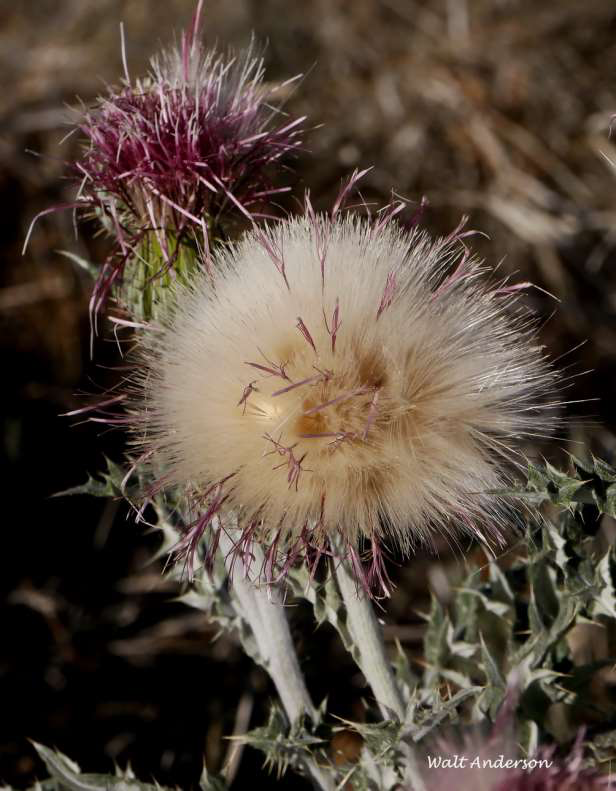
Post-pollination, each seed (an achene) develops long feathery plumes (pappus). The fluff functions as a parachute to carry away the seeds when the wind picks up. Adult plants stay put, but the babies are cast to the vagaries of the wind.
●●●
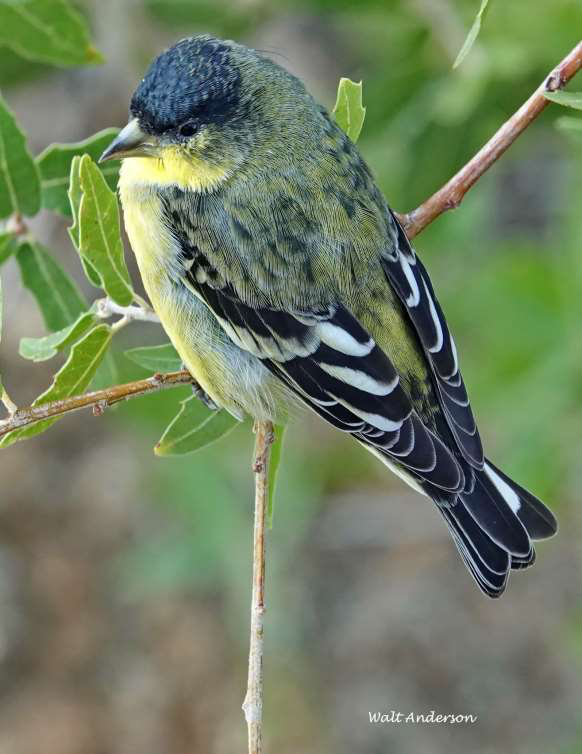
Birds such as this Lesser Goldfinch seek out the nutritious achenes, but they never get them all. They may also collect the fluff for nesting material. A diverse ecosystem provides services to so many other organisms. Applying herbicides to kill thistles can destroy so much more than the target weed. We need to develop much better ecological awareness and stop the destruction of complex ecosystems that may serve us in ways we can scarcely imagine.
●●●
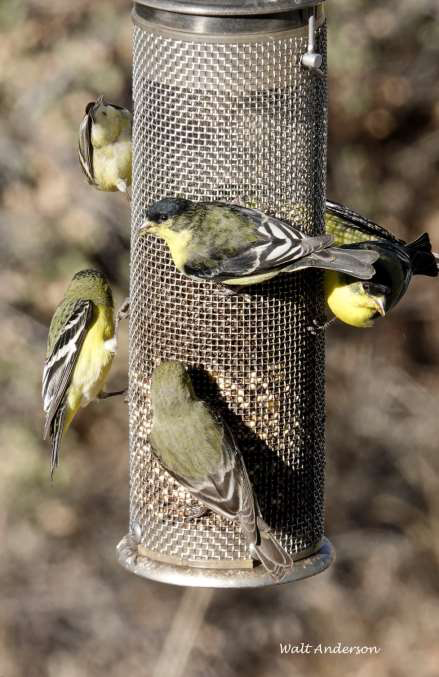
Stores provide us with “thistle seed” that provides highly nutritious food to goldfinches, House Finches, doves, and other birds. Technically, this is not really thistle seed. It is from Guizotia abyssinica, a plant originally found in Ethiopia. It is often called “Nyger,” and while not a thistle, it is in the composite or sunflower family, Asteraceae. It lacks spines and has both ray and disk flowers. It’s a reminder that a lot of plants with “thistle” in the name (e.g., Russian Thistle, Sow Thistle, Star Thistle) are not in the true thistle tribe that this essay features.
●●●
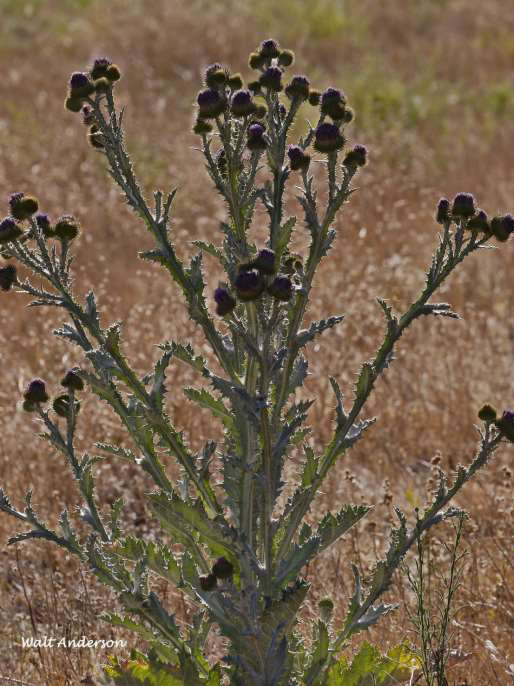
Scotch Thistle is one of the non-natives that often has a price on its head. If left undeterred, it can form thickets that you wouldn’t want to try to walk through. According to Scottish legend, as Vikings were advancing, some thistle heads strewn on the beach caused at least one of the Norse invaders to cry out in pain upon stepping on it, alerting the Scots, who then routed the Norsemen. The thistle later became the symbol of Scotland and the source for the motto, “Touch Me Who Dares.” Some scholars think that the native Bull Thistle was responsible, as what we now call the Scotch Thistle wasn’t found there in medieval days. No one is really sure how much is bull or how much came about from drinking too much Scotch.
●●●
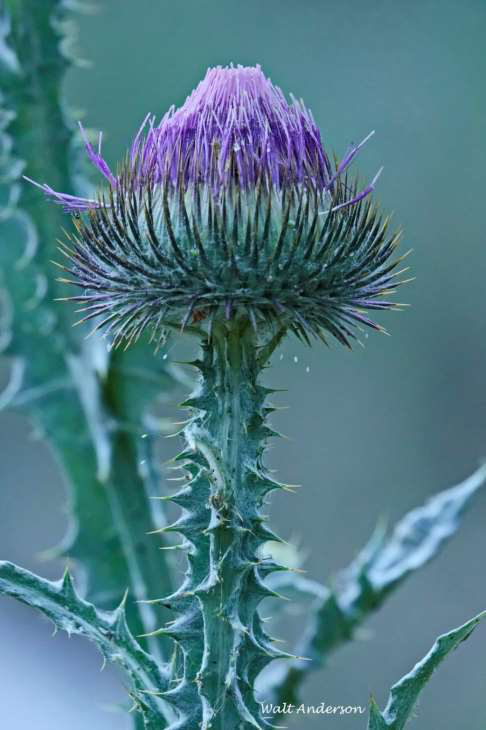
There is no easy way to handle a thistle like this. Yet thistles have been used as food for centuries, and some Native American tribes used extracts medicinally. Keep in mind that the artichoke is a thistle. There are a few patches of this nasty plant along the Peavine Trail and in Watson Woods in Prescott. This is a plant that could easily get out of hand if not controlled while the patches are relatively small. Do pollinators use it? Of course, but it’s better to encourage the native thistles that have co-evolved with native pollinators.
●●●
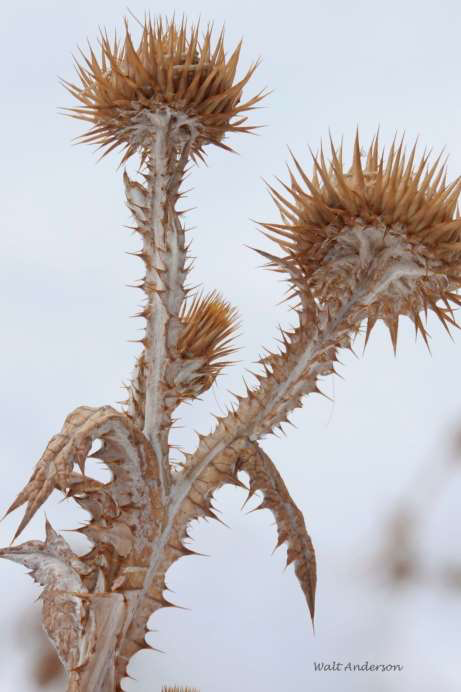
A Scotch Thistle in the snow. Thistles are beautiful; they represent good design, which is why they are so successful. But as in all things ecological, we must sometimes make judgment calls based on predictions of how something will impact other members of the biotic community. We have messed with ecosystems to the extent that many results are irreversible. How many changes can we tolerate before the land we love is no longer loveable? I believe that ecological literacy should be fostered just as we encourage literacy of other kinds.
